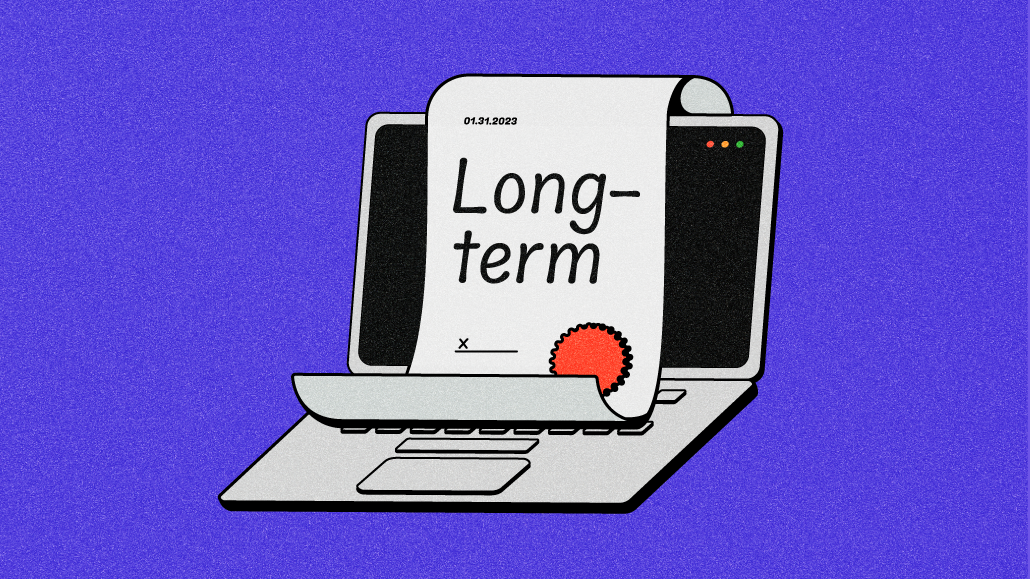As influencer marketing continues to mature, here’s why brands are hiring creators as ‘creative directors’

Last month, Visible rolled out a Singles’ Awareness Day campaign featuring comedian and influencer Benito Skinner aka Benny Drama. The effort is part of a brand shift for Visible to reduce the number of influencers it works with in favor of more collaborative relationships, said Visible CMO Cheryl Gresham.
That focus on collaboration meant Skinner took an “active, participatory role,” explained Gresham, who said Skinner pitched in with script suggestions for the character as well as set design tweaks.
“A collaborative nature is a must,” said Skinner, who has worked with brands like Visible, Target and Mac, among others, to create content that will appeal to his audience of 1.4 million Instagram followers. “I want to be thoughtful about [brand partnerships] so that people can enjoy it. I still want it to feel like me.”
Skinners’ recent collaborative work with Visible is likely part of a burgeoning trend with influencers working in a more advisory capacity. Rather than working with dozens of influencers to post the same brand-approved copy, marketers and agency execs say that the relationship with influencers is evolving and maturing to work with them on more than just a media placement.
For some, that’s more collaborative creative work with brands like Gymshark and Pretty Little Things using influencers like David Laid and Molly Mae as creative directors. (Brands like Wild Turkey have been using celebrity creative directors to stand out for years; Diet Coke turned to model Kate Moss while LVMH recently tapped Pharell.) For others, it’s using the insight influencers have about their audience almost like that of market research.
“The era of creators as creative directors is here, and it will only continue,” said Sadie Schabdach, Dentsu Creative evp of influencer marketing. “This trend is an evolution of the product marketing collaboration model, which positions creators as innovators on behalf of brands. This model will not eliminate the modes of influencer marketing that preceded it. This is a ‘yes, and’ extension of how brands and influencers are working together today.”
Marketers are looking to influencers for “creative ideation and thoughtful strategic direction” to make content that is “durable, lasting and impactful,” explained Zach Blume co-founder of the creative shop Portal A, who added it’s a move away from a more transactional model to one of a “deeper level of collaboration.”
“It’s because authenticity wins,” said Katy Tenerovich, director of social strategy for Carmichael Lynch. “These influencers know what resonates with their audience better than we do. They should be the ones leading the creative process, not following strict orders from brands and agencies.” Tenerovich added that the creative shop is also looking to hire a creator as a “social content designer.”
While brands may want content that is more authentic to them now, the move to be more collaborative with influencers comes as influencers are recognizing the opportunity in building their own brands to monetize their own audience, agency execs said. With that being the case, marketers need to offer influencers more incentives to work with them.
“Brands and marketers are having to approach more creators as true partners or collaborators,” said Brendan Gahan, chief social officer and partner at Mekanism. “The reason? The power dynamics between brands and creators have evolved. It used to be creators were reliant upon brands to make a living. But, that’s all changed.”
Gahan continued: “Creators are seeing their peers launch their own brands, products, and communities and make more money than ever. There’s a playbook. Creators find content marketing fit. Then they build an audience. Then they launch companies. So, creators understand they’ve got options. As a result, brands have to make their incentives more compelling.”
Jago Sherman, head of strategy at the influencer shop Goat Agency echoed that sentiment: “this reverses the relationship, from brands telling influencers what they want, to asking them what they need.”
It’s unclear how much more influencers make for a more collaborative or longer-term relationship with a brand. The nature of the deal would change, per agency execs, but will be dependant on the influencer, the brand and the nature of the relationship.
“Paying for someone’s knowledge and expertise is obviously very different from paying for their media value,” said Vickie Segar, founder of influencer marketing shop Village Marketing. “We are creating custom offers for this work and deciding together what the value is per creator. That said, their time is very valuable given what they are able to make with branded posts.”
Marketers and agency execs say they expect this evolution to continue as the changing nature of advertising today — where the landscape is more fragmented and harder to break through — makes influencers more and more appealing.
“The current reality is that the landscape has really changed — creators now define and influence culture via an ongoing connection with their unique audiences,” said Kerry Doyle, evp and head of content at Carat U.S. “Creators have that one-to-one emotional bond and influence that is ultimately driving the cross-funnel bottom line for our business, from awareness to purchase.”
More in Marketing

‘Still not a top tier ad platform’: Advertisers on Linda Yaccarino’s departure as CEO of X
Linda Yaccarino — the CEO who was never really in charge.

Questions swirl after X CEO Linda Yaccarino departs from the platform
Her departure marks the end of two tumultuous years at the platform.

Creator marketing has the reach — CMOs want the rigor
The creator economy got big enough to be taken seriously.






